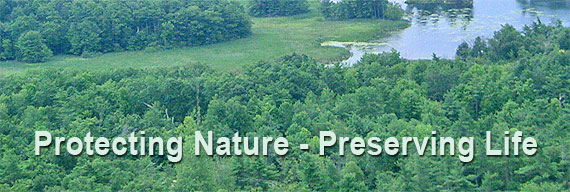Chapter 6
The Forest Trees in General
For the use of the ever-increasing number of Yosemite visitors who make
extensive excursions into the mountains beyond the Valley, a sketch of
the forest trees in general will probably be found useful. The
different
species are arranged in zones and sections, which brings the forest as
a whole within the comprehension of every observer. These species are
always found as controlled by the climates of different elevations,
by soil and by the comparative strength of each species in taking and
holding possession of the ground; and so appreciable are these
relations
the traveler need never be at a loss in determining within a few
hundred feet his elevation above sea level by the trees alone; for,
notwithstanding some of the species range upward for several thousand
feet and all pass one another more or less, yet even those species
possessing the greatest vertical range are available in measuring
the elevation; inasmuch as they take on new forms corresponding with
variations in altitude. Entering the lower fringe of the forest
composed
of Douglas oaks and Sabine pines, the trees grow so far apart that not
one-twentieth of the surface of the ground is in shade at noon. After
advancing fifteen or twenty miles towards Yosemite and making an ascent
of from two to three thousand feet you reach the lower margin of the
main pine belt, composed of great sugar pine, yellow pine, incense
cedar
and sequoia. Next you come to the magnificent silver-fir belt and
lastly
to the upper pine belt, which sweep up to the feet of the summit peaks
in a dwarfed fringe, to a height of from ten to twelve thousand feet.
That this general order of distribution depends on climate as affected
by height above the sea, is seen at once, but there are other harmonies
that become manifest only after observation and study. One of the most
interesting of these is the arrangement of the forest in long curving
bands, braided together into lace-like patterns in some places and
out-spread in charming variety. The key to these striking arrangements
is the system of ancient glaciers; where they flowed the trees
followed,
tracing their courses along the sides of cañons, over ridges,
and high
plateaus. The cedar of Lebanon, said Sir Joseph Hooker, occurs upon one
of the moraines of an ancient glacier. All the forests of the Sierra
are
growing upon moraines, but moraines vanish like the glaciers that make
them. Every storm that falls upon them wastes them, carrying away their
decaying, disintegrating material into new formations, until they are
no
longer recognizable without tracing their transitional forms down the
Range from those still in process of formation in some places through
those that are more and more ancient and more obscured by vegetation
and
all kinds of post-glacial weathering. It appears, therefore, that the
Sierra forests indicate the extent and positions of ancient moraines as
well as they do belts of climate.
One will have no difficulty in knowing the Nut Pine (Pinus Sabiniana),
for it is the first conifer met in ascending the Range from the west,
springing up here and there among Douglas oaks and thickets of
ceanothus
and manzanita; its extreme upper limit being about 4000 feet above the
sea, its lower about from 500 to 800 feet. It is remarkable for its
loose, airy, wide-branching habit and thin gray foliage. Full-grown
specimens are from forty to fifty feet in height and from two to three
feet in diameter. The trunk usually divides into three or four main
branches about fifteen or twenty feet from the ground that, after
bearing away from one another, shoot straight up and form separate
summits. Their slender, grayish needles are from eight to twelve inches
long, and inclined to droop, contrasting with the rigid, dark-colored
trunk and branches. No other tree of my acquaintance so substantial in
its body has foliage so thin and pervious to the light. The cones are
from five to eight inches long and about as large in thickness; rich
chocolate-brown in color and protected by strong, down-curving nooks
which terminate the scales. Nevertheless the little Douglas Squirrel
can
open them. Indians climb the trees like bears and beat off the cones or
recklessly cut off the more fruitful branches with hatchets, while the
squaws gather and roast them until the scales open sufficiently to
allow the hard-shell seeds to be beaten out. The curious little Pinus
attenuata is found at an elevation of from 1500 to 3000 feet,
growing in
close groves and belts. It is exceedingly slender and graceful,
although
trees that chance to stand alone send out very long, curved branches,
making a striking contrast to the ordinary grove form. The foliage is
of
the same peculiar gray-green color as that of the nut pine, and is worn
about as loosely, so that the body of the tree is scarcely obscured
by it. At the age of seven or eight years it begins to bear cones in
whorls on the main axis, and as they never fall off, the trunk is soon
picturesquely dotted with them. Branches also soon become fruitful. The
average size of the tree is about thirty or forty feet in height and
twelve to fourteen inches in diameter. The cones are about four inches
long and covered with a sort of varnish and gum, rendering them
impervious to moisture.
No observer can fail to notice the admirable adaptation of this curious
pine to the fire-swept regions where alone it is found. After a running
fire has scorched and killed it the cones open and the ground beneath
it
is then sown broadcast with all the seeds ripened during its whole
life.
Then up spring a crowd of bright, hopeful seedlings, giving beauty for
ashes in lavish abundance.
|













